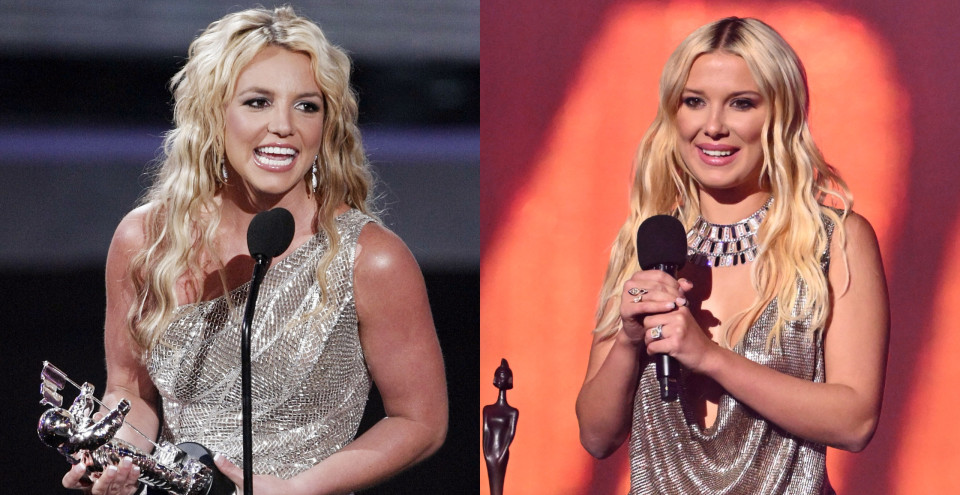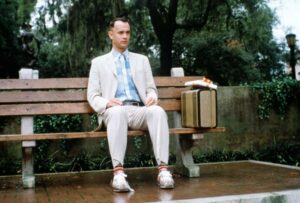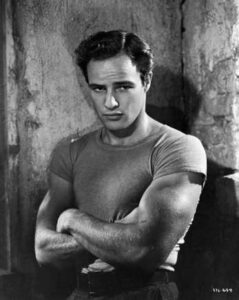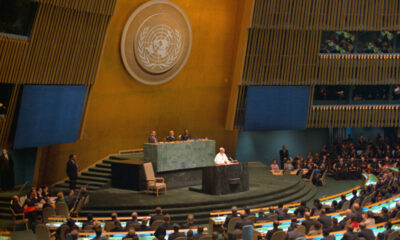Entertainment
10 celebrities who returned their industry awards

Throughout history, some of the biggest names in entertainment have rejected prestigious honors—not out of ingratitude, but as powerful statements against injustice, industry politics, or personal principles. From Marlon Brando’s iconic Oscar protest to Tom Cruise returning his Golden Globes, these acts of defiance tell deeper stories about the artists behind them.
Let’s explore the surprising moments when stars turned down or gave back their awards—and the reasons that drove them.
1. Tom Cruise – Returning Golden Globes Over Diversity Concerns

©Getty Images
In 2021, Tom Cruise made headlines when he returned his three Golden Globe awards. The actor, known for his roles in Born on the Fourth of July (1989), Jerry Maguire (1996), and Magnolia (1999), took a stand against the Hollywood Foreign Press Association (HFPA), the organization behind the awards.
At the time, the HFPA faced heavy criticism for its lack of diversity and ethical controversies. Cruise’s move was part of a broader industry backlash, with many calling for systemic change in how awards are decided.
2. John Lennon – Rejecting British Honors Over War Protests

©Getty Images
In 1969, John Lennon returned his Member of the Order of the British Empire (MBE) medal—not an industry award, but a high honor from the British monarchy. His reason? Protesting Britain’s involvement in the Nigerian Civil War and support for the U.S. in Vietnam.
Lennon, a vocal peace activist, had reportedly considered this move for years. His act was a bold political statement, reinforcing his belief that governments should prioritize peace over war.
3. Tom Hanks – The Oscar That Almost Went Back (For a Funny Reason)

©Getty Images
Unlike others on this list, Tom Hanks’ near-return of his Oscars wasn’t about protest—it was about maintenance. After winning Best Actor for Philadelphia (1994) and Forrest Gump (1995), Hanks noticed his trophies were looking worn out.
He asked the Academy if they could be polished, but when told he’d have to get new ones instead, he refused. Instead, he banned anyone from touching them, preserving the original awards as they were.
4. Dudley Nichols – The First Oscar Refusal Over Writers’ Rights

Screenwriter Dudley Nichols made history in 1936 as the first person to refuse an Oscar. Nominated for The Informer, Nichols declined the award in solidarity with the Screen Writers’ Guild, which the Academy had failed to recognize.
His protest highlighted the ongoing struggle for writers’ rights in Hollywood—a fight that continues today with strikes and negotiations over fair pay.
5. George C. Scott – The Actor Who Hated Awards Shows

©Getty Images
George C. Scott despised the competitive nature of acting awards. In 1962, he refused his Hustler Oscar nomination, calling the ceremony a “meat parade.” A decade later, he won for Patton (1972)—and skipped the ceremony, sticking to his principles.
Scott believed art shouldn’t be turned into a competition, making him one of Hollywood’s most consistent award rebels.
6. Marlon Brando – The Godfather Who Boycotted for Native Rights

One of the most famous Oscar rejections came from Marlon Brando in 1973. After winning Best Actor for The Godfather, he sent Native American activist Sacheen Littlefeather to decline it on his behalf.
Brando’s protest targeted Hollywood’s mistreatment of Native Americans in film. Though Littlefeather was cut off after 60 seconds, the moment remains a powerful symbol of activism in awards history.
7. Katherine Heigl – Turning Down an Emmy Over Creative Disputes

Katherine Heigl shocked fans in 2008 by withdrawing from Emmy consideration for Grey’s Anatomy. Having won the previous year, she felt her character hadn’t been given enough strong material to deserve another nomination.
Her decision sparked debates about honesty in awards culture—was she humble, or was she criticizing her own show’s writing?
8. Julie Andrews – Rejecting a Tony Nomination for Her Cast

©Getty Images
Julie Andrews, a Broadway legend, declined her 1996 Tony nomination for Victor/Victoria. She believed the rest of her cast and crew had been unfairly overlooked, saying, “I could not accept a nomination without them.”
Her selfless act highlighted the importance of teamwork in theater—a rarity in an industry often focused on individual stars.
9. William Daniels – Fighting for Leading Role Recognition

©Getty Images
William Daniels refused his 1969 Tony nomination for 1776—not because he didn’t want the award, but because he was wrongly placed in the “Supporting Actor” category.
Daniels argued (correctly) that he played the lead role of John Adams. When the Tony committee refused to re-categorize him, he withdrew entirely, standing firm on principle.
10. Sinead O’Connor – Boycotting the Grammys Over “Materialism”

©Getty Images
In 1990, Sinead O’Connor refused to attend the Grammys, calling out the music industry’s “false and destructive materialistic values.” Despite winning Best Alternative Music Performance, she rejected the award, staying true to her anti-commercial stance.
Her protest foreshadowed later artists like Kanye West and Frank Ocean, who also criticized awards shows for prioritizing fame over artistry.
Conclusion: Awards Are Meaningful—Until They’re Not
For most, industry awards represent the pinnacle of success. But as these stories show, some artists see them as secondary to bigger issues—whether it’s social justice, creative integrity, or simple fairness.
Returning an award isn’t just about rejection; it’s about making a statement louder than any trophy. And in doing so, these stars remind us that principles sometimes matter more than prestige.
Which of these refusals surprised you the most? Let us know in the comments!
Sources: BBC, New York Times, IMDb

Entertainment
Olivia Wilde Slams Blue Origin’s All-Female Flight: ‘Billion Dollars Bought Some Good Memes I Guess’

A Historic Mission with Stellar Cast
On Monday, April 14, 2025, Blue Origin achieved a historic milestone with its 11th human flight of the New Shepard program—the 31st in its storied history. This particular mission was special for its pioneering all-female crew, a first reminiscent of trailblazing feats like that of Valentina Tereshkova in 1963. The crew included several well-known names such as:
- Katy Perry, the pop icon who even paid tribute to her daughter by taking a daisy—symbolic of her love and personal connections—to space.
- Gayle King, a celebrated journalist whose seasoned career has long been intertwined with significant cultural moments.
- Lauren Sánchez, a philanthropist and Blue Origin’s VP of Communications, who brought her passion for innovation to the mission.
- Aisha Bowe, a former NASA rocket scientist whose expertise reflects the enduring contributions of women in STEM.
- Amanda Nguyen, a bioastronautics research scientist, representing the cutting-edge of space research.
- Kerianne Flynn, a film producer, who added an artistic flair to the crew’s dynamic.
Their journey wasn’t solely about breaking records; it symbolized the progress of female empowerment in fields historically dominated by men. This mission, however, wasn’t without its critics and controversies.
Olivia Wilde’s Candid Critique
Shortly after the mission, Olivia Wilde took to Instagram Stories to share a meme that quickly went viral. The meme featured two images of Katy Perry: one of her happily holding a daisy—a nod to her daughter Daisy Dove Bloom—and another of her warmly kissing the ground after disembarking from the capsule. Overlaying the images was the phrase, “getting off a commercial flight in 2025 #BlueOrigin.” Wilde’s accompanying comment—“Billion dollars bought some good memes, I guess.”—hit a nerve.
Wilde’s remark raises significant questions about the allocation of billions toward space tourism when pressing issues on Earth abound. Is the investment in such missions justified when other societal matters remain underfunded? Her statement serves as a catalyst, prompting reflections on the balance between technological advancement and addressing global concerns.
Exploring the Meme’s Cultural Impact
Wilde’s meme-driven commentary is more than just a quip—it reflects broader cultural conversations about value, priorities, and the role of spectacle in modern society. In today’s digital landscape, memes are powerful cultural symbols that can succinctly encapsulate complex ideas. Wilde’s comment suggests that while the spectacle might produce “good memes” and viral moments, it simultaneously raises eyebrows about whether these billions could yield more substantive benefits.
In essence, Wilde challenges us to consider:
- Cost versus Benefit: Is the substantial investment in space tourism disproportionate compared to funding social, environmental, or humanitarian endeavors?
- Symbolism over Substance: Does the glamor and novelty of these missions distract from more pressing, earthbound issues?
- Public Perception: How does society balance the allure of technological marvels with practical, impactful advancements?
The Spectrum of Reactions: Critics vs. Supporters
Reactions to the mission—and to Wilde’s comment—were polarized, reflecting diverse opinions on what such endeavors signify for society. Let’s break down the contrasting voices:
Critics of the Mission
- Olivia Munn:
On the April 3 episode of Today with Jenna and Friends, Olivia Munn expressed her skepticism regarding the necessity of such high-cost missions, hinting that priorities should lean towards solving terrestrial issues rather than spending billions on space tourism. - Emily Ratajkowski:
The model and actress took to TikTok to voice her disapproval, describing the mission as “end time s—” and labeling it “beyond parody.” Her comment illustrated how even those within the entertainment industry can view these endeavors as out of touch with more urgent global priorities. - General Public Concerns:
There is an underlying sentiment among critics that the billions spent on space exploration might yield minimal benefit to everyday lives, particularly when compounded by issues such as climate change, poverty, and healthcare crises.
Supporters of the Flight
- Gayle King:
In a press conference with PEOPLE, Gayle King defended the mission by emphasizing its inspiring impact on young women and girls. “Anybody that’s criticizing it doesn’t really understand what is happening here,” she stated. King’s perspective highlights the symbolic significance of such milestones for advancing gender equality. - Lauren Sánchez:
Sánchez passionately expressed that the mission should be appreciated for what it represents. Speaking about the hardworking teams behind Blue Origin, she said, “Trust me. Come with me. I’ll show you what this is about, and it’s, it’s really eye-opening.” Her words underline that beyond the glamour, the mission is a testament to the dedication of many professionals striving to push the boundaries of innovation. - Broader Support from the Space Community:
Proponents argue that investments in space exploration can have long-term benefits. They view these missions as essential steps toward human expansion into new frontiers and as catalysts for technological breakthroughs that can eventually benefit various sectors on Earth.

(L-R) Kerianne Flynn, Katy Perry, Lauren Sanchez, Aisha Bowe, Gayle King and Amanda Nguyen. Photo: BLUE ORIGIN HANDOUT/EPA-EFE/Shutterstock
A Comparative Look: Evaluating the Mission’s Value
To better understand the multifaceted debate sparked by Olivia Wilde’s comment, it helps to compare the viewpoints of critics and supporters in a structured format:
| Aspect | Critics’ Perspective | Supporters’ Perspective |
|---|---|---|
| Financial Investment | Billions could be diverted to critical social issues; excessive spend on a spectacle. | High investment is seen as necessary for technological breakthroughs and inspiring future generations. |
| Public Perception | Perceived as a wasteful display that distracts from pressing global issues. | A symbol of progress and empowerment, particularly for women and girls in STEM and leadership. |
| Cultural Impact | Seen as a trend-driven endeavor that produces fleeting viral moments (good memes) but little substance. | Represents a significant cultural milestone that highlights how far diversity and inclusion have come, potentially inspiring further change. |
| Long-Term Benefits | Skepticism about the practical applications and real benefits of such missions for everyday life. | Advocates believe that the spinoffs of space technology have historically led to innovations that improve quality of life in the long run. |
This table encapsulates the heart of the debate: while critics see the mission as a costly vanity project, supporters view it as an essential investment in the future, both technologically and socially.
Broader Context: The Rise of Space Tourism and Its Controversies
Blue Origin, along with competitors like SpaceX and Virgin Galactic, is at the forefront of a burgeoning space tourism industry. While each mission brings with it a sense of wonder and exploration, it also raises questions about resource allocation and ethical priorities.
The Economic and Technological Case for Space Tourism
- Economic Growth and Innovation:
The space tourism sector is seen as a driver for economic innovation. Investment in this industry has the potential to spawn new technologies and create job opportunities in highly specialized fields. The research and development in aerospace have historically yielded technological spin-offs that benefit various industries—from communication to medicine. - Inspiration for Future Generations:
The symbolic value of sending diverse groups of individuals, such as an all-female crew, into space cannot be understated. For many, seeing role models venture into new frontiers provides motivation for pursuing careers in science, technology, engineering, and mathematics (STEM). This inspirational factor is often highlighted by industry leaders as a core benefit of these missions.
The Criticism: A Question of Priorities
- Resource Allocation:
Critics maintain that when billions are poured into space tourism, other critical areas such as healthcare, education, and environmental protection are left underfunded. This viewpoint raises an important question: In a world grappling with climate change and socio-economic disparities, is it justifiable to invest so heavily in ventures that seem, at first glance, to cater to the privileged? - Perception of Elitism:
The imagery associated with space tourism—luxurious flights and high-profile celebrities—can feed into a narrative of elitism. For many, it appears that space is being opened up not for the common man, but for a select few who already have access to substantial resources and influence. This perception fuels arguments that the focus should shift towards democratizing technology rather than celebrating it in isolation.
Olivia Wilde’s Comment: Meme Culture as a Reflection of Societal Values
Olivia Wilde’s comment is emblematic of a broader cultural phenomenon where memes serve as both satire and social commentary. In a digital age, the virality of a meme can drive public discourse, often encapsulating deep-seated frustrations or admiration in just a few words.
The Power of Memes
- Brevity and Impact:
Memes distill complex issues into accessible and instantly shareable content. Wilde’s remark—though humorous on the surface—reflects a critical view of where societal investments should lie. The meme not only pokes fun at the extravagance of the mission but also invites a wider conversation about priorities in a rapidly evolving world. - Digital Democracy:
Social media platforms have democratized commentary, allowing celebrities like Wilde to share opinions that resonate widely. The public’s rapid response—whether through retweets, likes, or debates in the comment sections—further cements the power of digital platforms in shaping cultural narratives. - Reflecting Broader Discontent:
In Wilde’s words, the phrase “Billion dollars bought some good memes, I guess” captures a sentiment that is increasingly common among audiences. There is a growing awareness and frustration regarding the allocation of massive budgets to endeavors that appear disconnected from everyday challenges, and this meme serves as a shorthand for that sentiment.
Personal Reflections and Broader Implications
As a society, our priorities are continuously in flux, and moments like these challenge us to rethink our investments in technology versus our commitments to social issues. When one considers the motivations behind space tourism and the expenses involved, several questions naturally arise:
- Could the billions spent on space tourism be channeled into initiatives that directly improve public welfare?
- What is the long-term value of these high-profile missions beyond their immediate cultural impact?
- How do we balance the allure of technological marvels with the pressing needs of our global community?
From a personal standpoint, it’s easy to appreciate the wonder of space exploration—there’s an undeniable magnetism in the idea of venturing beyond our planet. However, Wilde’s comment challenges us to not take these expenditures at face value. It serves as a reminder that while striving for progress is commendable, it is crucial to maintain a grounded perspective on what truly matters to humanity.
A Call for Balance and Transparency
For policymakers and industry leaders, this debate underscores the need for transparency and accountability in how public and private funds are allocated. Ideally, investments in space should yield tangible benefits that trickle down to everyday life—be it through technological spin-offs, job creation, or fostering educational opportunities.
At the same time, the inspirational value of having diverse role models, as seen with Blue Origin’s all-female crew, is significant. Their participation in such groundbreaking missions can motivate countless young individuals—especially girls—toward careers in STEM and leadership roles, contributing positively to long-term societal growth.
Deep Dive: Interviews and Expert Opinions
In exploring this topic further, several experts have weighed in on the value of space tourism versus terrestrial priorities:
- Dr. Helena Cruz, Aerospace Economist:
“Investments in space often yield unexpected benefits in technological innovation that eventually impact healthcare, communications, and even environmental monitoring,” she explains. Dr. Cruz argues that while the initial costs are high, the long-term gains in innovation can justify the expenditure when viewed from a broader perspective.
Learn more about economic benefits of space investments. - Professor Mark Ellison, Social Policy Analyst:
“Critics of space tourism frequently overlook the indirect benefits that spill over into society. However, the challenge lies in balancing these futuristic endeavors with immediate social needs. It’s a complex equation that demands careful policy-making,” he adds.
Read detailed analyses on public policy and technology.
These insights illustrate that while opinions vary, the discussion is both multifaceted and far from black and white.
Visualizing the Debate: A Snapshot Table
Here is a concise table summarizing the key points from both camps of this debate:
| Aspect | Critics’ Concerns | Supporters’ Arguments |
|---|---|---|
| Financial Priorities | Diverting funds from urgent global issues. | Long-term technological and economic innovation. |
| Public Perception | Elite, ostentatious spending disconnected from real needs. | Inspirational symbolism and empowerment, especially for women. |
| Cultural Impact | Produces fleeting, meme-driven cultural moments. | Establishes historic milestones that inspire future generations. |
| Policy Implications | Questions sustainability and fairness of resource allocation. | Necessitates transparent investments with multifaceted benefits. |
This table provides an at-a-glance understanding of the core arguments and demonstrates that the debate extends beyond mere opinion—it has real implications for policy and societal values.
Broader Implications for the Space Industry
The conversation sparked by Wilde’s comment has broader implications for the space industry as a whole:
- Reevaluating Goals and Impact:
As the private space sector grows, there is a pressing need to reassess the societal impact and tangible benefits of these high-profile missions. Industry leaders must work to ensure that while pushing technological boundaries, they are also addressing the foundational needs of society. - Empowering Future Innovators:
The inclusion of influential role models in space missions—such as the all-female crew—can be a catalyst for inspiring future innovators. The transformative power of representation may stimulate greater interest in STEM fields, ultimately creating a more inclusive workforce for the future. - Encouraging Constructive Dialogue:
Public debates like this one underscore the value of constructive dialogue between industry leaders, policymakers, and the public. By engaging in transparent discussions about the allocation of resources, society can better navigate the balance between ambition and pragmatism.
Conclusion: A Reflective Moment in Our Time
Olivia Wilde’s succinct yet piercing comment—“Billion dollars bought some good memes, I guess”—serves as a springboard for a deeper discussion on the merits and drawbacks of modern space tourism. Her remark, encapsulated in meme culture, invites us to question not just the financial justifications of such endeavors, but also the cultural and ethical dimensions of progress.
This moment, emblematic of our digital age, forces us to reflect on the essential question: Are we investing in the future while neglecting the urgent needs of our present? While critics argue that spending billions on space flights sends the wrong signal, supporters believe that these missions are a necessary leap toward a more innovative and inclusive tomorrow.
The debate is far from settled. As technology advances and humanity continues to look toward the stars, it will be imperative to strike a delicate balance between inspiring the next generation and addressing the immediate challenges on Earth. Whether one views the recent all-female flight as a milestone of empowerment or a questionable allocation of resources, the conversation it generates is invaluable.
A Parting Thought
As we continue to navigate the evolving landscape of space exploration and cultural discourse, one thing remains clear: the dialogue between progress and pragmatism is essential. Olivia Wilde’s comment is not merely about a meme; it reflects a broader societal introspection—a moment to ask tough questions about our priorities and the future we aim to build.
We’d love to hear your thoughts on this debate. Do you think the excitement of reaching space justifies the billions invested, or should resources be channeled into more pressing earthly concerns? Share your insights in the comments below, subscribe for more engaging content, and join the conversation on our social media channels. Your voice matters in shaping the future of this dialogue.
By examining the complexities behind this historic flight and the diverse perspectives it has provoked, we’re reminded that every great technological leap comes with its share of societal questions. Let’s continue exploring these questions together, seeking a balance that honors both the wonders of the cosmos and the urgent needs of our world.
Entertainment
Who Is Megan Fox’s First Husband? A Deep Dive into Brian Austin Green

When you hear the name Megan Fox, images of red carpets, blockbuster films, and high-profile romances might come to mind. But before the headlines with Machine Gun Kelly, there was Brian Austin Green—the actor who became her first husband and the father of her three children. Their relationship, spanning over a decade, was filled with passion, challenges, and growth. Let’s delve into the life of Brian Austin Green and his intricate relationship with Megan Fox.
Brian Austin Green: From Teen Heartthrob to Family Man
Born on July 15, 1973, in Los Angeles, California, Brian Austin Green began his acting career at a young age. He gained fame as David Silver on the iconic 1990s series Beverly Hills, 90210. Beyond acting, Green explored music and later transitioned into various television roles, showcasing his versatility in the entertainment industry.
The Beginning: A Fateful Meeting on Set
In 2004, on the set of the sitcom Hope & Faith, an 18-year-old Megan Fox met 30-year-old Brian Austin Green. Despite the age difference, Fox was captivated by Green’s demeanor and maturity. Green, initially hesitant due to their age gap, was eventually won over by Fox’s persistence and charm. Their connection was immediate, leading to a deep and passionate relationship.
A Rollercoaster Romance: Engagements, Marriage, and Parenthood
Their relationship saw its share of ups and downs. After dating for two years, the couple got engaged in 2006, only to call it off in 2009. However, love prevailed, and they reunited, marrying on June 24, 2010, in a private ceremony in Hawaii.
Together, they welcomed three sons:
-
Noah Shannon Green (born 2012)
-
Bodhi Ransom Green (born 2014)
-
Journey River Green (born 2016)
Green also has a son, Kassius, from a previous relationship with actress Vanessa Marcil.
Challenges and Separation: The End of an Era
Despite their strong bond, the couple faced challenges. In 2015, Fox filed for divorce, citing irreconcilable differences. They reconciled shortly after, but by May 2020, they announced their separation. Green later revealed that minor issues, like his chewing habits, became significant irritants for Fox, indicating deeper underlying problems in their relationship. YahooPage SixWikipedia+1People.com+1People.com+1Page Six+1
Their divorce was finalized in October 2021. Despite the separation, they remained committed to co-parenting their children, emphasizing the importance of family unity.Wikipedia
Life After Love: New Beginnings
Post-divorce, both Fox and Green embarked on new journeys. Fox began a relationship with musician Machine Gun Kelly, with whom she shares a daughter. Green found love with professional dancer Sharna Burgess. The couple welcomed a son, Zane, in 2022 and announced their engagement in 2023.thesun.co.uk+3glamour.com+3People.com+3Page Six+4Wikipedia+4Page Six+4People.com
Their blended family dynamics have been a testament to modern co-parenting. Photos shared by Burgess showcase the harmonious relationship between all members, highlighting the importance of mutual respect and understanding. Page Six
Reflections: Lessons from a Decade-Long Relationship
Megan Fox has spoken candidly about her marriage to Green, describing it as “unfulfilling” at times. She acknowledged entering the relationship at a young age, which influenced her experiences and perceptions. Entertainment Tonight
Green, on the other hand, emphasized the significance of addressing issues early in a relationship. He believed that seeking therapy could have potentially salvaged their marriage, highlighting the importance of communication and understanding. People.com
Conclusion: A Journey of Growth and Transformation
The story of Megan Fox and Brian Austin Green is one of love, challenges, growth, and transformation. Their relationship, while filled with highs and lows, led to the creation of a beautiful family and valuable life lessons. Both have moved on, finding happiness in new relationships, yet their shared history remains a significant chapter in their lives.
What are your thoughts on Megan Fox and Brian Austin Green’s relationship journey? Have you experienced similar challenges in relationships? Share your insights and stories in the comments below. For more deep dives into celebrity relationships and life lessons, subscribe to our newsletter and stay updated!
Sources: People Magazine, Harper’s Bazaar, ET Online, Wikipedia
-

 News2 months ago
News2 months agoFrom Peace to Progress: The United Nations Biggest Wins
-

 Business2 months ago
Business2 months ago7 tips for creating discipline with money
-

 Travel2 months ago
Travel2 months agoThe Secret to Exploring Europe Without Breaking the Bank in 2025
-

 Lifestyle1 week ago
Lifestyle1 week agoThe American Dream: A Living Ideal or a Fading Illusion?
-

 Food1 month ago
Food1 month agoOffice Lunch Ideas That Save Time and Money Without Sacrificing Flavor
-

 Travel2 months ago
Travel2 months agoDelicious and Easy Boating Recipes for Your Next Family Adventure
-

 Travel2 months ago
Travel2 months agoThe Biggest Mistakes Tourists Make at National Parks (And How to Avoid Them)
-

 Entertainment2 months ago
Entertainment2 months agoOlivia Wilde Slams Blue Origin’s All-Female Flight: ‘Billion Dollars Bought Some Good Memes I Guess’
-

 Entertainment2 months ago
Entertainment2 months agoWho Is Megan Fox’s First Husband? A Deep Dive into Brian Austin Green
-

 Travel1 month ago
Travel1 month agoThe Pros and Cons of Living on a Houseboat






